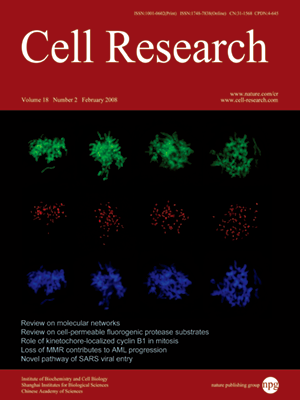
Volume 18, No 2, Feb 2008
ISSN: 1001-0602
EISSN: 1748-7838 2018
impact factor 17.848*
(Clarivate Analytics, 2019)
Volume 18 Issue 2, February 2008: 281-289
ORIGINAL ARTICLES
Preferential loss of mismatch repair function in refractory and relapsed acute myeloid leukemia: potential contribution to AML progression
Guogen Mao1, Fenghua Yuan1, Kimberly Absher2, C Darrell Jennings2, Dianna S Howard3, Craig T Jordan4 and Liya Gu1,2
1Department of Toxicology, University of Kentucky College of Medicine, Lexington, KY 40536, USA
2Department of Pathology and Laboratory Medicine, University of Kentucky College of Medicine, Lexington, KY 40536, USA
3Department of Internal Medicine, University of Kentucky College of Medicine, Lexington, KY 40536, USA
4James P Wilmot Cancer Center, University of Rochester Medical Center, Rochester, NY 14642, USA
Correspondence: Liya Gu(lgu0@email.uky.edu )
Acute myeloid leukemia (AML) is an aggressive hematological cancer. Despite therapeutic regimens that lead to complete remission, the vast majority of patients undergo relapse. The molecular mechanisms underlying AML development and relapse remain incompletely defined. To explore whether loss of DNA mismatch repair (MMR) function is involved in AML, we screened two key MMR genes, MSH2 and MLH1, for mutations and promoter hypermethylation in leukemia specimens from 53 AML patients and blood from 17 non-cancer controls. We show here that whereas no amino acid alteration or promoter hypermethylation was detected in all control samples, 18 AML patients exhibited either mutations in MMR genes or hypermethylation in the MLH1 promoter. In vitro functional MMR analysis revealed that almost all the mutations analyzed resulted in loss of MMR function. MMR defects were significantly more frequent in patients with refractory or relapsed AML compared with newly diagnosed patients. These observations suggest for the first time that the loss of MMR function is associated with refractory and relapsed AML and may contribute to disease pathogenesis.
Cell Research (2008) 18:281-289. doi: 10.1038/cr.2008.14; published online 29 January 2008
FULL TEXT | PDF
Browse 1987


